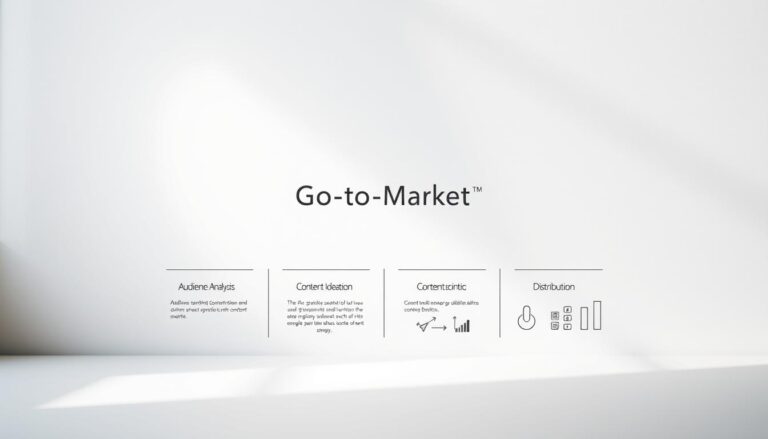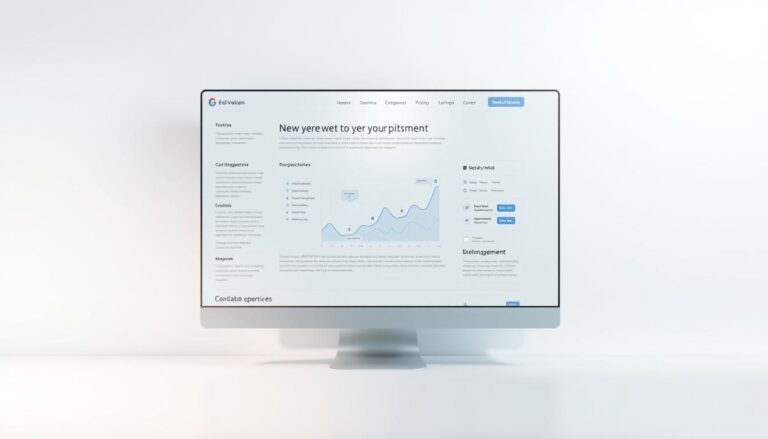In today’s fast-changing digital marketing world, companies need to use advanced tools to better their lead nurturing efforts. clay.com shines by offering new solutions that make use of AI technology for smarter lead generation. With its smooth email marketing automation, clay.com helps businesses reach out automatically yet keep a personal touch. This boosts engagement and sales. clay.com transforms the way companies nurture leads by making it simpler to find, enrich, and convert them. This makes clay.com a must-have for marketing teams aiming for top performance.
Key Takeaways
- clay.com enhances lead nurturing campaigns through innovative AI-driven solutions.
- Effective lead generation strategies are essential for successful marketing efforts.
- Email marketing automation helps maintain personalization while scaling outreach.
- Engaging with leads effectively can significantly boost sales conversions.
- Streamlined processes lead to better management of leads and improved campaign results.
Understanding Lead Nurturing Campaigns
Effective lead nurturing is key in top-notch marketing plans. It’s all about building bonds with potential customers as they decide. This method is crucial for boosting engagement and upping conversion rates. Through the use of customer relationship management, companies can customize their messages. This will ensure that potential buyers get timely and relevant info at each step of their journey.
What is Lead Nurturing?
Lead nurturing uses different strategies to grow relationships with potential buyers. It means keeping in touch, offering useful content, and solving concerns as leads move down the sales funnel. By embracing inbound marketing, businesses can draw in and keep prospects interested, ensuring a smooth experience. Good lead nurturing not only educates potential buyers but also builds trust. This makes it easier for them to pick a brand when they’re ready to buy.
Importance of Lead Nurturing
Lead nurturing plays critical roles in sales. First, it boosts the chance of conversions by engaging leads at optimal times. Second, it fosters brand loyalty since leads feel cared for and understood. Third, top-notch lead nurturing leads to happier customers and better retention rates. Brands that focus on nurturing leads report a big jump in their marketing success.
Key Components of Successful Campaigns
A winning lead nurturing campaign includes several crucial elements. These are:
- Strategic Content Marketing: Gives leads valuable and relevant material tailored to their needs and interests.
- Targeted Messaging: Sends personalized messages based on lead actions and preferences, making communication more compelling.
- Feedback Utilization: Takes in and acts on customer feedback to always improve and fine-tune outreach efforts.
| Component | Description |
|---|---|
| Strategic Content Marketing | Creates content that meets the unique needs of leads and guides them through the buying process. |
| Targeted Messaging | Makes communication personalized, based on each lead’s actions and demographics, to increase engagement. |
| Feedback Utilization | Enhances outreach strategies using feedback from leads and customers, making marketing more effective. |
Why Choose clay.com for Your Campaigns?
When you want to boost your lead nurturing, choosing the right platform matters. clay.com stands out for businesses wanting to grow their digital marketing. It offers a strong set of tools with features that beat the competition.
Unique Features of clay.com
clay.com‘s AI-driven data enrichment is a key feature. It ensures you get the most relevant leads, improving your outreach quality. Automated workflows let you send personalized messages to each prospect. These features together make your campaigns more effective.
Benefits of Using clay.com
Using clay.com for lead generation has many benefits. It lets businesses streamline their work and spend less time on manual tasks. This efficiency saves time and money. Plus, it helps focus on other important work. Many users see higher engagement rates, thanks to the platform’s personalized approaches.
Customer Testimonials
Catherine, a digital marketer, says, “Since we started using clay.com, our engagement has increased by 30%. The personalized campaigns we create through their automated workflows really connect with our audience.”
Tom, a startup founder, shares, “Clay.com changed how we do digital marketing. It lets us concentrate on strategy while it handles the details of lead nurturing.”
Setting Up Your Lead Nurturing Campaign
Effective lead nurturing needs careful planning. It starts with a clear plan and objectives. Then, figure out who you’re targeting by segmenting your customers. This makes your messages more personal. Learning from market research helps build stronger relationships.
Step-by-Step Guide to Campaign Setup
Start your campaign with a clear method. Here’s what you should do:
- Define your objectives – Describe your goals, like more sales or better engagement.
- Research your target audience – Use surveys and analysis to understand your leads.
- Select the right tools – Pick software that helps with personalized outreach, like CRM or email marketing platforms.
- Create a content calendar – Schedule your messages to be consistent and relevant.
Choosing the Right Audience
Knowing your audience is key to a successful campaign. Find specific groups to send tailored messages to. Use these strategies:
- Utilize analytics to see which groups liked your past campaigns.
- Consider behavioral data, like previous actions and engagement levels, to better select your audience.
- Conduct A/B testing to find out which messages work best for different groups.
Crafting Personalized Messages
Personalized messages greatly improve engagement. Create messages that truly speak to your audience’s needs. Follow these tips:
- Use the recipient’s name in emails for a personal touch.
- Segment messages based on what you learned about your customers.
- Highlight relevant solutions for their particular problems.
Integrating clay.com with Other Tools
Using clay.com with other tools really helps businesses improve their lead nurturing. The CRM compatibility makes sure data moves smoothly across popular systems. This helps teams track and manage customer interactions better.
Compatibility with CRM Systems
Clay.com works great with top CRM platforms, making operations more efficient. It works well with Salesforce, HubSpot, or Dynamics 365, letting businesses sync customer data easily. This tools integration makes keeping records simple and enhances the customer experience.
Syncing with Marketing Automation Tools
Marketing automation enhancements with clay.com let it connect with tools like Salesloft and Outreach. Users can automate follow-ups and plan outreach better. This leads to faster responses to leads and smoother processes, which help convert more leads.
Enhancing Analytics with Tools Integration
Using clay.com also improves analytics capabilities. Integrating with different platforms gives a full view of campaign performance and lead engagement. This data helps make smart decisions and fine-tune marketing strategies. Better analytics let businesses understand customer behavior and reach out more effectively.
| CRM System | Features | Integration Benefits |
|---|---|---|
| Salesforce | Data management, reporting, and record creation | Streamlined data access and improved sales tracking |
| HubSpot | Contact syncing, workflow automation | Efficient management of leads and campaigns |
| Dynamics 365 | Seamless data handling, reporting | Enhanced collaboration between departments |
| Pipedrive | Record updates, lead lookup | Improved lead tracking and management |

Learn more about how seamless integrations can boost your campaigns by visiting this link.
Measuring Campaign Success
Understanding how well lead nurturing campaigns work is important. Knowing which parts connect with people helps companies get better. By looking closely at results, they learn what grabs attention and what turns into sales, letting them tweak their plans for success.
Key Metrics to Track
- Open Rates: This shows the number of people who opened your emails, a first sign they’re interested.
- Click-Through Rates: This tells you the share of readers who clicked on a link, showing they liked what they saw.
- Conversion Rates: Important for understanding how many people did what you hoped, like buying something or signing up.
- Engagement Levels: Keeping an eye on how people interact with your content helps see if your message is hitting home.
Tools for Monitoring Performance
Using tools for analytics helps businesses do better. Platforms like Google Analytics, HubSpot, and Mailchimp offer deep insights. They watch how users act, test email success, and share detailed reports for making smart changes.
Adjusting Strategies Based on Results
Looking at performance regularly lets companies improve their methods. Highlighting what works and changing what doesn’t leads to stronger campaigns. This approach not only helps now but also ensures lasting growth in connecting with leads.
Techniques for Effective Lead Engagement
Making leads more involved is key for successful campaigns. Using smart methods can help grab and keep leads interested all the way. A mix of interesting content, emails aimed right, and active social media plans builds a strong system for talks.
Crafting Compelling Content
Good content makes leads want to connect with your brand. Knowing what your audience likes helps make content just for them. This might be helpful blog posts, fun videos, or interactive graphics that grab potential customers, leading to more trust and talk.
Utilizing Email Marketing
Emails should feel personal and match what leads are looking for. Splitting your email list by actions or age lets you send targeted messages that matter. Using automatic messages to keep in touch can make potential buyers stay interested.
Social Media Strategies
Social media is a strong way to reach and get leads to interact. Using ads, sharing cool stuff, and talking with people builds a community for your brand. Regular posts and chats on social sites make your audience feel connected and up-to-date.
| Engagement Technique | Description | Benefits |
|---|---|---|
| Content Marketing | Creating relevant and valuable content that attracts and retains leads. | Builds trust, improves brand visibility, and encourages sharing. |
| Email Marketing | Using personalized emails to nurture leads through targeted campaigns. | Increases open rates, click-through rates, and conversions. |
| Social Media | Engaging with audiences via platforms like Facebook, Twitter, and LinkedIn. | Enhances brand personality, fosters community, and drives traffic. |
Segmenting Your Audience Effectively
Breaking your audience into specific groups lets businesses craft campaigns that really hit the mark. By sorting customers based on shared traits, companies gain many benefits. This technique makes marketing messages more relevant, boosting both interest and sales.
Benefits of Audience Segmentation
Splitting your audience into segments offers many perks for businesses wanting to up their marketing game. Key advantages include:
- Increased relevance: Messages crafted for specific groups meet the audience’s needs better.
- Higher engagement rates: When content speaks directly to people, they’re more likely to engage.
- Better conversion potential: Campaigns aimed at particular segments often turn leads into customers more effectively.
Methods for Segmenting Leads
Companies have several strategies for segmenting their audience effectively:
- Demographic segmentation: This involves grouping people by age, gender, income, or education.
- Firmographic segmentation: This focuses on companies’ traits like size, industry, and location.
- Behavioral segmentation: This looks at customer behaviors, likes, and buying habits to create segments.
Tailoring Campaigns to Segments
After identifying audience segments, businesses can create targeted campaigns. Doing so brings lots of benefits, like:
- Messages that connect better with each audience group.
- Smarter use of resources by focusing on the most promising segments.
- Stronger loyalty from customers thanks to relevant offers and messages.
To wrap up, good audience segmentation is key to nailing your marketing strategies. By really getting to know their audience and making customized campaigns, companies can greatly improve their marketing results.
Leveraging Automation in Campaigns
Automation boosts the efficiency of lead nurturing campaigns. Marketing automation allows companies to use automated workflows. This streamlines processes, ensuring timely follow-ups and steady communication with potential customers. Automation leads to better response rates and lets teams focus on key strategies. This means teams can use their time more wisely.
Advantages of Automation
Automation has many benefits for companies. Those who use marketing automation see big improvements in handling leads. This tech is great at managing lots of data. It can provide personalized experiences for each lead. Better data processing leads to smarter decisions. This means businesses can contact leads at just the right time with the right content.
Setting Up Automated Workflows
Creating automated workflows starts with understanding customer journeys. Companies should find important touchpoints and see which processes can be automated. Developing a system for personalized follow-ups and using tools like AI data analytics helps a lot. A well-planned automated workflow keeps leads engaged. It makes sure they get information that meets their needs. For more ideas on this, check out the AI lead nurturing systems blog.
Avoiding Common Automation Pitfalls
While automation has big benefits, there are pitfalls to avoid. One major issue is generic messaging, which can make campaigns less effective. Leads want messages that feel personal. By continually analyzing and adjusting automated workflows, companies can avoid this problem. Focusing on meaningful engagement rather than just sending lots of messages makes leads feel valued. This approach leads to more effective nurturing campaigns.

Enhancing User Experience
It’s very important to make sure users are happy and involved from the start. By using good personalization, companies can make their messages fit better for each person. Making sure websites are easy to use helps people find what they need without hassle. By listening to what users say, companies can make big improvements to match what people want.
Personalization Strategies
Personalizing how you talk to users helps build a stronger bond. This can include:
- Creating customized email content based on user preferences.
- Designing landing pages that resonate with specific audience segments.
- Utilizing targeted advertisements that reflect individual interests.
Importance of User-Friendly Interfaces
Interfaces that are easy to use make interacting a joy. Key parts include:
- Clear navigation paths that guide users effortlessly.
- Visual designs that are appealing and accessible.
- Fast loading times which reduce user frustration.
Collecting Feedback for Improvement
Gathering feedback regularly lets businesses grow and change. Methods can involve:
- Surveys that gauge user satisfaction and pain points.
- Analytics tools that analyze user behavior patterns.
- Direct outreach to gather personal insights from key customers.
Best Practices for Lead Nurturing Campaigns
It’s crucial to use best practices for lead nurturing for marketing success. Understanding the right and wrong ways to do it is important. Also, respecting data privacy laws builds trust with your audience. Keeping in touch regularly without annoying them is key.
Dos and Don’ts of Lead Nurturing
Keep these essential tips in mind to improve your lead nurturing:
- Do personalize your communications to build relevance and connection.
- Do segment your audience to tailor messages according to their preferences.
- Don’t bombard leads with excessive emails, which can lead to disengagement.
- Don’t neglect feedback; use it to refine your approaches continually.
Staying Compliant with Regulations
Following laws like GDPR and CAN-SPAM is crucial in lead nurturing. Always be clear about how you’ll use someone’s data. This approach not only keeps you legal but also builds trust.
Maintaining Engagement Over Time
Keeping people engaged is an ongoing effort. It’s important to regularly check and adjust your communication strategies. Look at how people are responding and make changes where needed. Using automation can help you stay in touch effectively. For more tips, check out this lead nurturing guide.
Troubleshooting Common Issues
In lead nurturing campaigns, overcoming challenges keeps things moving smoothly. You might hit roadblocks like bad targeting, messages that don’t hit the mark, and low engagement from your audience. Spotting these issues early is key to fixing them quickly.
Identifying Campaign Roadblocks
Knowing what’s stopping your success helps you find the right fixes. Dig into your data to figure out where things are going off track. You should watch out for a mismatch between your message and your target audience, low open rates for emails, and people unsubscribing or giving negative feedback.
- Mismatch between target audience and messaging
- Low open and click-through rates
- Unsubscribes or negative feedback
Solutions for Low Engagement
To fix low engagement, start by reevaluating your current strategies. Here are some changes to think about:
- Refining targeting criteria to better match your desired audience
- Making messages more personal to increase content relevance
- Switching up marketing channels to connect with your audience where they hang out
- Adding interactive elements to get users more involved
Adjusting Tactics for Better Results
Once you’ve spotted and addressed issues, keep fine-tuning your strategy. Staying on top of your campaign performance is crucial. Keep evaluating your tactics regularly, using analytics tools to help. Being proactive about changes leads to continuous improvement and better results in your lead nurturing efforts.
Future Trends in Lead Nurturing
The way we nurture leads is quickly changing. In the next few years, we expect big changes. The use of AI in marketing is a big reason for these changes. It will change how businesses talk to possible customers. Thanks to tech improvements, companies will use machine learning for better, more personal outreach. This makes talks with the audience more effective and interesting.
The Role of AI and Machine Learning
AI and machine learning are changing how we do lead nurturing. They help marketers look at lots of data for better targeting. AI tools will make lead scoring better. This gives businesses insights on the best leads. So, decisions will be based on data, not guesswork. This leads to better results.
Predictions for the Next Five Years
In the future, data-driven campaigns will lead in lead nurturing. Brands will use advanced algorithms to match customer preferences. This means more leads will become loyal customers. Businesses will need to adjust to these changes to stay strong in the market.
Adapting to Changing Customer Preferences
Customers want personal and easy experiences. It’s important to adapt to these needs. Marketers must keep updating their strategies to meet audience expectations. Those who use AI trends will have an edge in lead nurturing.
FAQ
What is lead nurturing?
Lead nurturing is about building relationships with potential customers as they decide to buy. It means keeping in touch with them until they’re ready to purchase. This boosts the chances of making a sale and keeping customers.
How does clay.com enhance lead nurturing campaigns?
Clay.com improves lead nurturing by offering smart tools like AI workflows and data updates. These help automate reaching out to people. This lets businesses grow their efforts but still keep messages personal, raising engagement and sales.
What are some key components of successful lead nurturing campaigns?
Successful campaigns have good content strategies, messages aimed at the right people, and use feedback to get better. These parts help make sure potential customers get interesting and related messages.
Why should I choose clay.com for my lead generation strategies?
Clay.com is special because it uses AI to update data and automate messages in a personal way. These tools can really boost how you automate marketing emails.
What metrics should I track to measure campaign success?
You should watch open rates, click-through rates, conversion rates, and how engaged people are. These will tell you if your campaign works and how to make it better.
What techniques can improve lead engagement?
Making content that interests your audience is key. Also, using email and social media helps reach people in different ways. This encourages them to explore what you’re selling more.
How can audience segmentation enhance my campaigns?
By dividing your audience into groups that share traits, your campaigns can be more direct. This leads to more interest and better chances of making sales.
What are the benefits of automating workflows in lead nurturing campaigns?
Automation makes lead nurturing easier and lets you reach more people. It keeps communication going, follows up on time, and keeps interest up, making marketing better.
How can I enhance user experience in my campaigns?
Personalizing emails, landing pages, and messages makes prospects feel more connected. Also, making everything easy to use makes experiences better, boosting engagement and happiness.
What common issues should I be aware of in lead nurturing campaigns?
Issues can be not hitting the right target and low interest. Fixing these problems means better targeting and messages that fit what people want to hear.
What future trends should I consider for lead nurturing?
The future will focus more on AI and learning from machines to tailor and improve messages. Keeping up with these trends will help you stay ahead in marketing.



